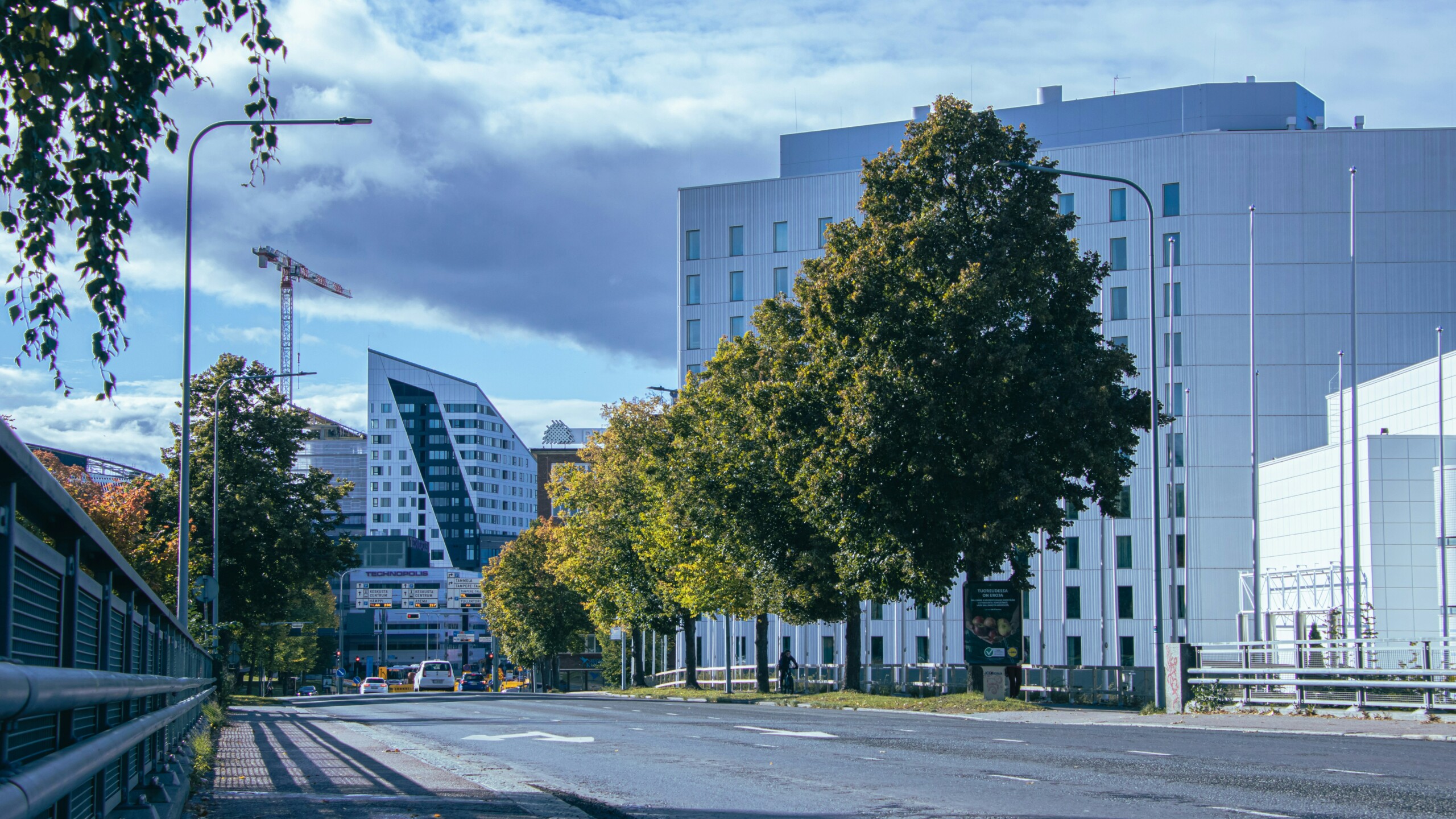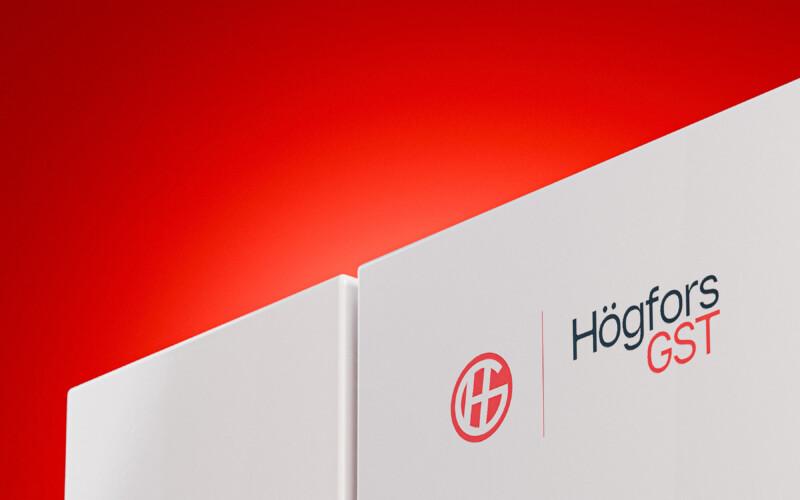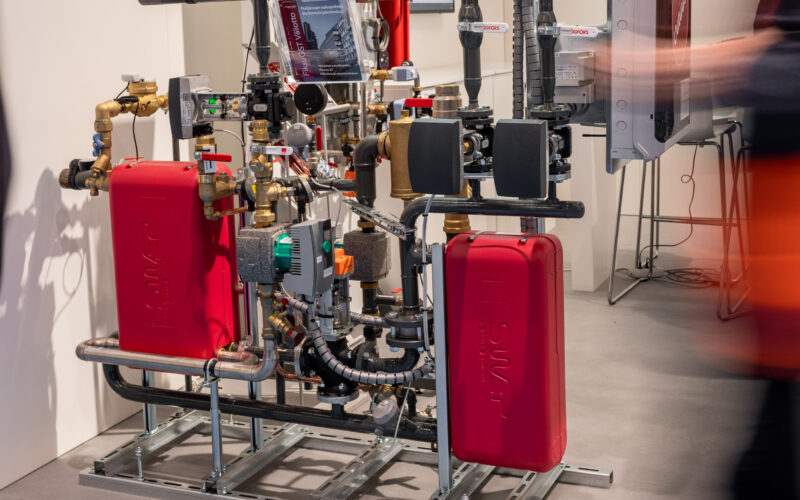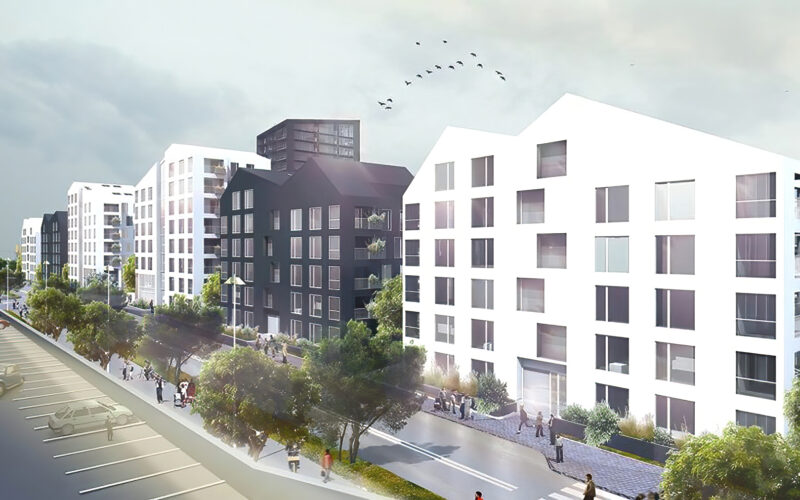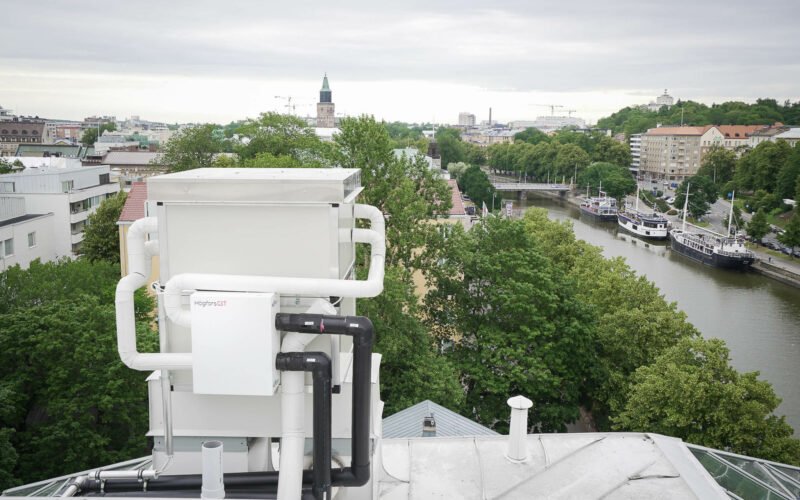In the first two parts of the blog series discussed the development of district heating systems from the 19th century to present day. As mentioned before, the development of district heating can be divided into generations. We are currently living in a turning point where third generation district heating is giving way to fourth generation.
4GDH – open, clean and flexible
First-generation district heating revolutionized urban heating, while during the second generation the heat transfer medium changed from steam to water. During the third generation the construction of district heating systems was revolutionized due to prefabricated parts and components. Fourth generation district heating, or 4GDH, will change district heating even more dramatically. At the heart of the change are eg. energy sources and the way in which the network is utilized.
Please note that the blog’s examples apply mostly to the Finnish district heating networks.
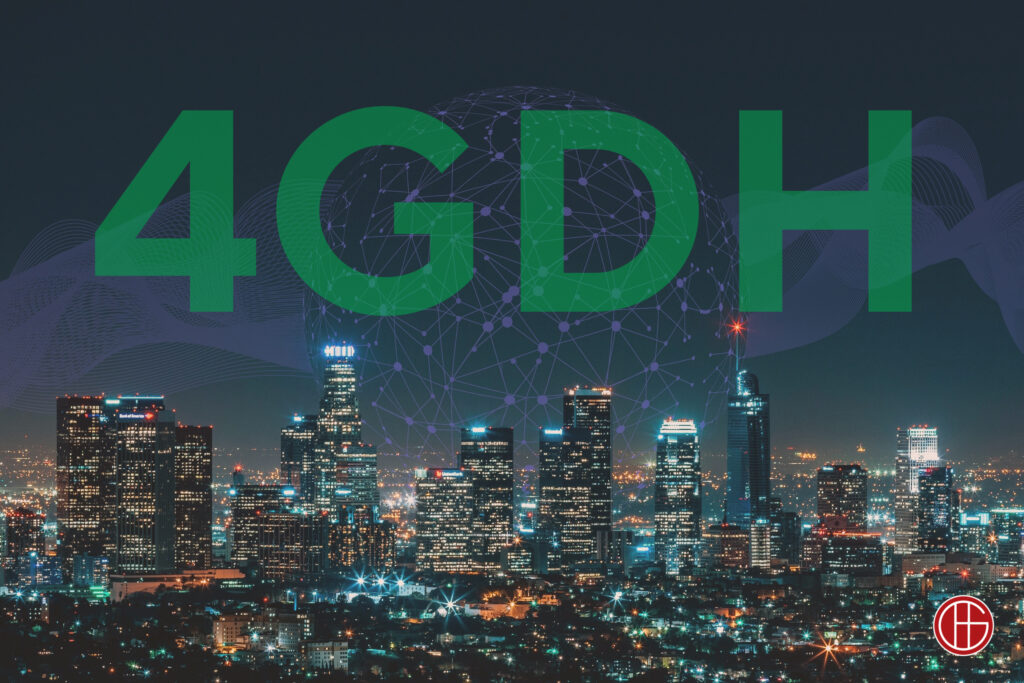
The last push for generational change has been given by the fight against climate change. The use of coal and other fossil fuels has become unprofitable over time and their use has been severely restricted. For example, Finland will ban the use of coal in energy production from 2029, so the energy sector will have to come up with new solutions quite rapidly. The transition to fourth generation district heating is one part of this process.
The district heating network is the energy route of the future
Fourth-generation district heating is more flexible, cleaner and more rapidly evolving than its predecessors. One could say that the very concept of district heating is changing. The district heating networks of the future are energy routes to which several different energy producers and consumers can be connected.
– Addressing district heating as a ”black-as-coal” form of heating is outdated information. Nowadays, the heat for the district heating network can be produced in countless different ways, of which coal is in the minority and its role is growing smaller as we speak, says Antti Hartman, Managing Director of HögforsGST.
So what does all of this actually mean? Scientists who have studied the development of district heating have listed five properties that describe fourth-generation district heating:
- Ability to supply low-temperature district heating for space heating and domestic hot water (DHW) to existing buildings, energy-renovated existing buildings and new low-energy buildings.
- Ability to distribute heat in networks with low grid losses.
- Ability to recycle heat from low-temperature sources and integrate renewable heat sources such as solar and geothermal heat.
- Ability to be an integrated part of smart energy systems (i.e. integrated smart electricity, gas, fluid and thermal grids) including being an integrated part of 4th Generation District Cooling systems.
- Ability to ensure suitable planning, cost and motivation structures in relation to the operation as well as to strategic investments related to the transformation into future sustainable energy systems.
But how do these things work in practice? Let’s find out!
Lower temperatures – the core of 4GDH
The water circulating in the Finnish district heating networks is currently around 90 degrees celcius. The temperature depends a lot on the need for heating energy: in the wintertime, the district heating water has to be hotter and in warmer weather and warmer climates the temperature can be a bit lower. The temperature of the water going from the district heating plant to the properties varies between 65 and 115 degrees, while the temperatures of the return network are often between 40 and 60 degrees.
The goal of fourth-generation district heating is to lower these network temperatures so that the average flow temperature can be reduced closer to 65 degrees and the return temperature to around 25 degrees. Lowering both flow and flow temperatures has a major impact on the energy efficiency of the entire district heating system and, at the same time, on costs and emissions.
– Thanks to modern heat transfer technology, the reduction of network temperatures can be done gradually without major additional investments. The current third-generation district heating networks can be upgraded to meet fourth-generation requirements bit-by-bit, Hartman says.
Simply put: thanks to more efficient heat exchangers, it is no longer necessary to heat the flow water to a boil in order to keep the properties warm. The more temperatures are lowered, the more money is also saved.
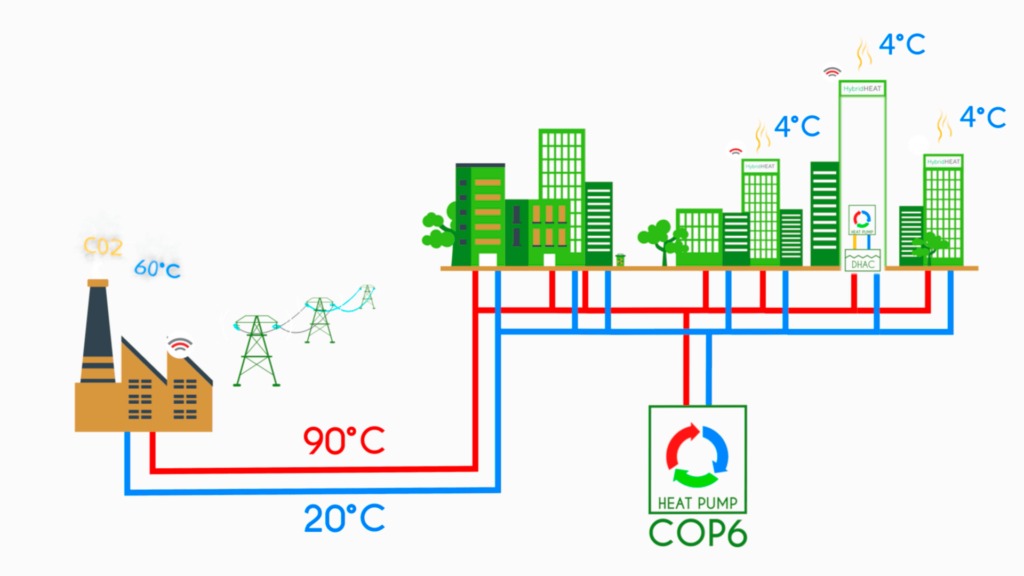
Illustration of how a 4GDH system works
Lowering temperatures provides the following benefits:
- The flow in the network is reduced, which reduces pumping costs
- The heat transmission capacity of the network is increased
- The heat loss of the network is reduced
- The efficiency of combined heat and power (CHP) is improved
- The efficiency of industrial heat pumps and flue gas scrubbers is improved
Thus, lowering the temperatures improves the efficiency of the district heating network at many points. Lowering temperatures is, in fact, such a significant part of a functioning fourth generation district heating system that it deserves its own blog post in the future!
Waste heat recovery is energy being recycled
A quite significant change in fourth-generation district heating compared to the previous generations is the diversity of energy sources. In fact, the operating principle of district heating is almost reversed: customers become co-producers of district heat!
In a fourth-generation district heating system, the role of the customer can be more than just the final consumer of heat. In the future, for example, industrial plants or even local businesses can act as small producers of district heating by selling their own waste heat to the district heating network.
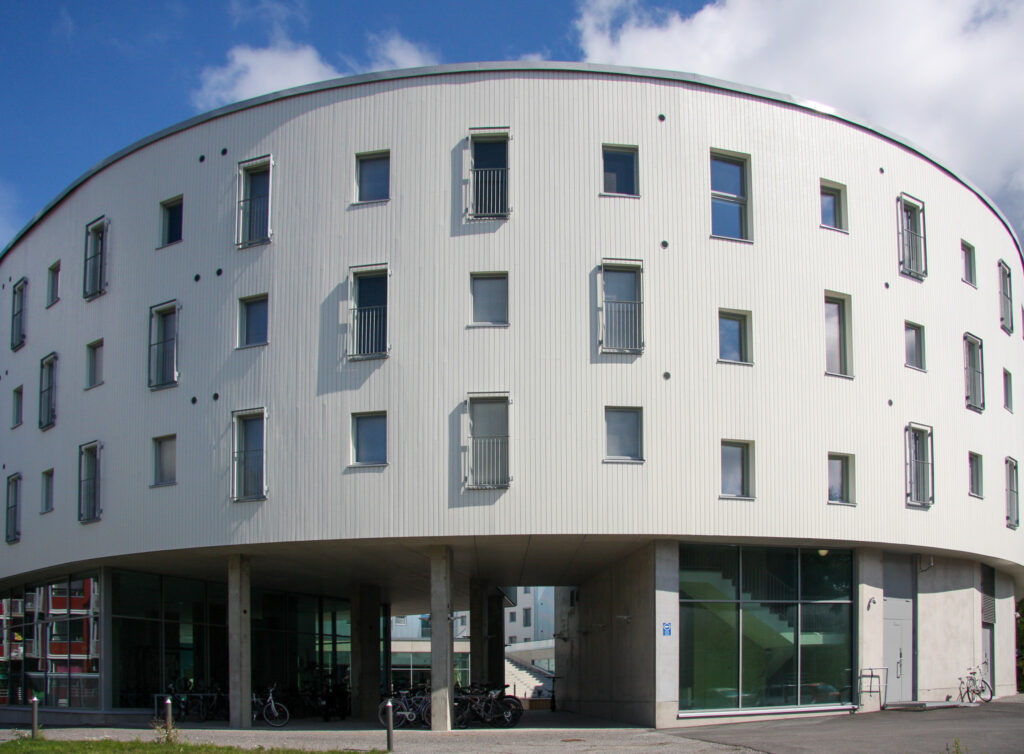
– The district heating system of the past was one-way only: energy was transferred through a “straight pipe” from the power plant to the customers. Now the relationship between customers and energy utilities is deepening when some customers suddenly become heat producers! If anything, then this is a great example of circular economy, Hartman says.
No more burning
District heating has almost always been produced by burning coal, oil, waste, wood chips or other combustible materials. Incineration is an efficient way to produce energy, but its problem is the emissions from combustion. The main problems are carbon dioxide and various small particles reducing the air quality. The use of fossil fuels has been both a cost-effective and energy-efficient way of producing heat and electricity, so the threshold for giving them up has been high. Now the situation is changing.
– The use of coal, and fossil fuels in general, has been profitable so far, so there has been no incentive to let go of it. However, the situation is changing as environmental awareness increases and the use of fossil fuels is being restricted. Now the energy industry is looking for alternative energy sources, Hartman says.
There is not a single form of energy that could replace coal completely. Lower-emission fuels, such as biomass and biogas, are reasonable options. Other potential options are waste heat recovery, geoenergy and industrial heat pump plants, for instace. The role of incineration in the future is likely to be a reliable source of energy at the time of peak demand. The goal is that the basic demand can be met by other energy sources.
Smart energy grids extend across the city
A more complex district heating network will not work without an intelligent control system. Smart technology improves the energy efficiency, reliability and money of networks.
– In many ways, 4GDH is a smarter entity than its predecessors. For example, smart substations installed in individual properties work to benefit both parties: residents receive accurate information about their energy consumption, system operation and they can also control their heating remotely. At the same time, the power plant receives a huge amount of data on the operation of the network, Hartman lists.
Hartman also believes that smart solutions will become more common in the future.
– District heating networks are transforming into open energy routes, which are maintained and controlled by, for example, energy companies. As the number of stakeholders increases and the network expands, more advanced technology is also needed to provide up-to-date information on the operation of the network. The modern district heating substation is also a data substation!
Towards a cleaner future with district heating
Intelligence, energy efficiency, new energy sources and communality. The deep core of fourth-generation district heating consists of these things. Together with growing environmental awareness these characteristics create a powerful weapon against climate change. According to Hartman, the generational change of district heating does not come too early.
– Heating residential buildings produces about a quarter of Finland’s carbon dioxide emissions. Emissions have been reduced quite a lot over time, but more needs to be done. The fourth generation of district heating solutions will cater to this need.
– Economic benefits and the well-being of the environment are often in conflict with each other, but in the development of district heating the situation is the opposite. Improving energy efficiency saves huge amounts of money while reducing emissions at the same time, Hartman states.
HögforsGST’s 4GDH solutions
HögforsGST already offers multiple fourth-generation district heating solutions that benefit both individual properties and the power plants that maintain the district heating network. HybridHEAT is an exceptionally energy-efficient heating solution that, as the name implies, is able to utilize several different heat sources. HybridHEAT can use, for example, district heating, ground heat and exhaust air heat recovery as a source of energy. The operation of a hybrid system is comparable to a hybrid vehicle that alternates between electricity and fuel. HybridHEAT alternates between different energy sources in a similar manner.
HybridHEAT is controlled by the Fiksu Control System. Fiksu’s role in utilizing various 4GDH solutions is important, as it can be used to remotely control the heating system and collect information about its operation. Fiksu improves the energy efficiency of an individual property and at the same time provides the power plant with information that allows them to optimize their operations and save on costs.
However, our work is not over yet, and in the coming months we will release several 4GDH solutions that can improve the energy efficiency of district heating systems and reduce the heating bill of a district heater.
Although the blog series has reached its end, our 4GDH journey is just beginning. In future blog articles, we will address subjects like heat recovery, energy renovations and, of course, fourth-generation district heating. Follow us on our social media channels to stay up to date!

